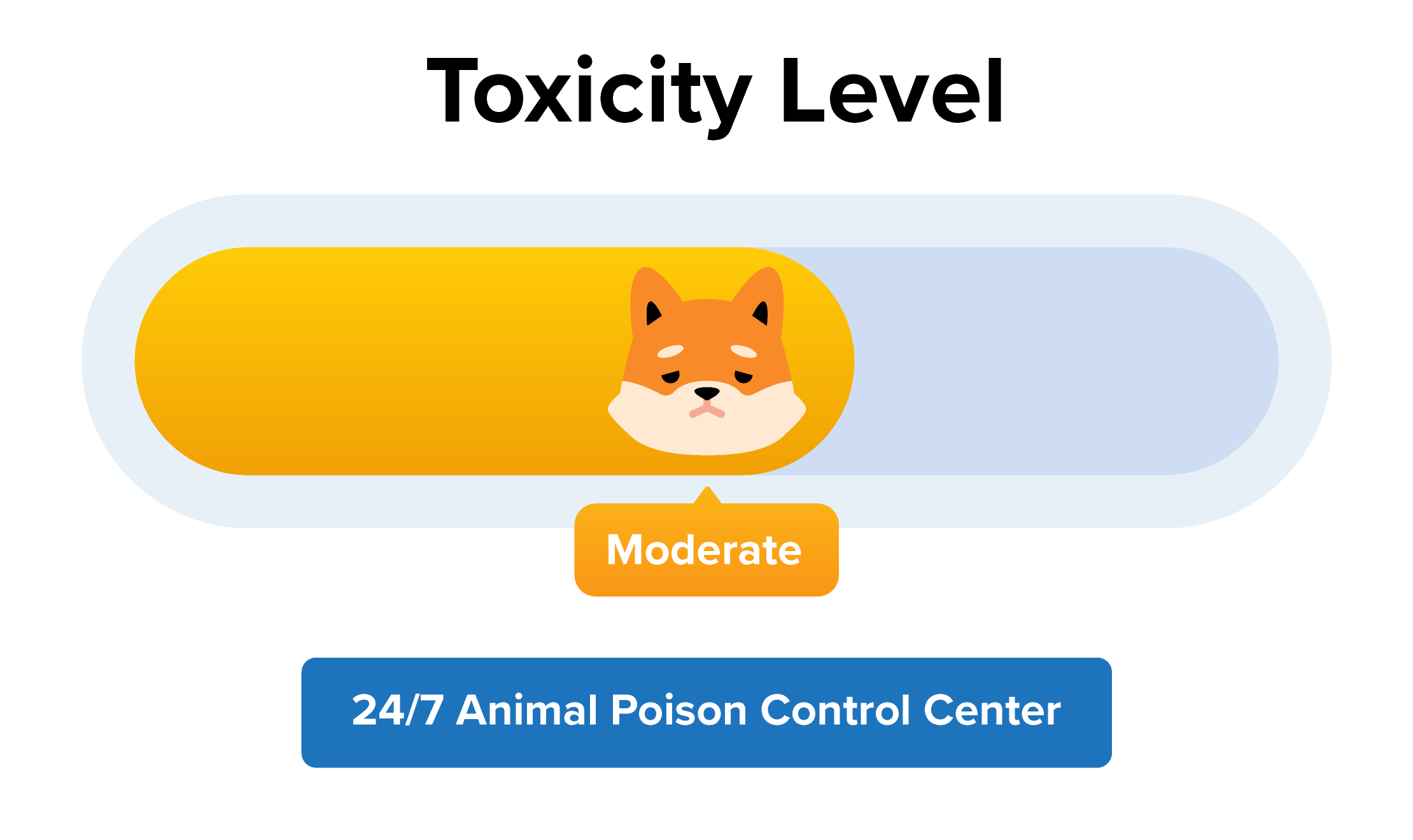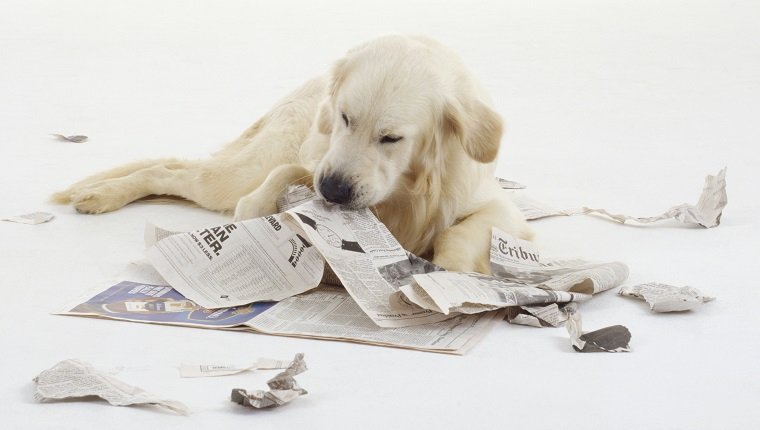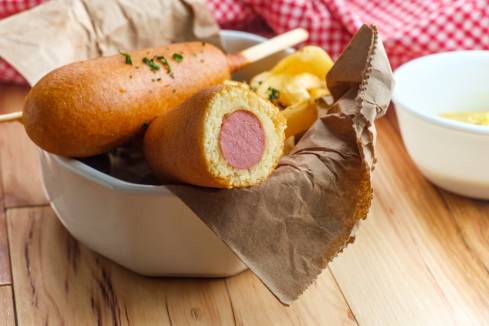Balloons are popular for many special occasions including weddings, birthdays, anniversaries, new babies and more. However, they’ve come under fire in recent years because when released, balloons take a horrible tole on wildlife. Not only do they cause problems for wildlife, balloons can also be dangerous for dogs.
Connect with a verified veterinarian in minutes. Licensed vets are available 24/7 to answer your questions. No need to worry about your furry family member.
Dogs love to pick up and eat the oddest things! Why would a dog ever eat a balloon? We’ve tried asking our dog, but all he does is smile—he doesn’t share his reasons for munching down on balloons!
Pica Condition in Dogs
One reason some dogs have a penchant for delectable balloons is due to a psychological condition called pica. Pica is found in humans and other animals. The condition creates an urge to eat substances or items that are not considered food. Here, think of kids playing outside and making mud pies. Some kids have been known to actually eat the mud pies! Dogs also have this condition, which is not always well understood.
- Some dogs, that have pica, may choose to eat balloons because of:
- Stress
- Depression
- Frustration
- Lack of attention
- Anxiety (such as being separated from their favorite person)
- Boredom
Pica is only one reason that a dog might eat balloons. Some dogs are simply curious, such as puppies, and will try anything that looks interesting. Tasting and mouthing are the way puppies and dogs learn about their world. However, in the process of tasting or mouthing a balloon, it is possible the balloon could break, causing your fur baby to accidentally swallow a piece of the balloon.
How Long Does It Take a Dog to Digest a Balloon?
Dogs are not able to digest balloons. The best scenario is that the balloon would eventually come out in his poop. This could take up to 2-3 days.

Review symptoms, medications & behavior to keep your pets healthy with a Vet Online in just minutes.
Ask a Vet Live NowWhat to Do If Your Dog Eats a Balloon
First of all, determine how much of the balloon your canine companion may have eaten. If he only ate a small piece of the balloon, chances are this will pass through his digestive system without causing any problems. Your fur baby may be nauseated, have diarrhea and could even vomit up the small piece he ate. However, if it appears that he ate the entire balloon, or even if you’re not sure hate at the whole thing, then it’s a good idea to call the vet.
If you know (or suspect) your precious pup has eaten the entire balloon (including any string or ribbon), call the vet immediately. A balloon and/or the string or ribbon could become lodged in his intestines and cause an intestinal blockage. This is a medical emergency.
Watch for these symptoms of an intestinal blockage:
- Constipation
- Lethargy
- Nausea
- Vomiting
- Diarrhea
- Loss of appetite
- Abdominal bloating and pain
Another potential issue that a balloon may cause is choking. It’s possible the balloon could become lodged in the dog’s esophagus, where it may block his airways. In that case, you may notice these symptoms:
- Gagging
- Coughing
- Hacking
- Breathing difficulties
- Cyanosis (dog’s gums and other tissues may appear bluish in color)
If your canine companion shows any of the above symptoms, call the vet immediately. This is an emergency. Be sure to call the vet even if your dog is not showing symptoms right away. Getting him access to medical care ASAP could keep his condition from becoming more serious or life-threatening.
Do Not Induce Vomiting
When your fur baby eats something they shouldn’t, it can be tempting to induce vomiting right away. After all, you want to help your dog and keep him safe. However, inducing vomiting can be extremely dangerous when done at home.
If your dog has eaten a ballon, getting him to vomit it up can be risky. In this situation, it’s possible your fur baby could aspirate the balloon and vomit. That means the vomit and balloon could be inhaled into your dog’s lungs. This could lead to pneumonia or other serious infections in the lungs.
In addition, it’s best not to wait to see if the balloon comes out in your dog’s poop. A balloon traveling through his digestive tract can also be extremely dangerous. The vet will let you know if it’s safe to wait for the balloon to come out or not.
Only induce vomiting if the vet instructs you to do so.
When you reach the vet, they will ask you how much of the balloon your fur baby may have ingested. They’ll inquire about the approximate time this happened and ask about other symptoms your dog may be having.
If your fur baby seems to have bowel obstruction, the vet will order several tests including blood tests and imaging tests. The images will show where in your fur baby’s digestive tract the balloon is located. This may determine the treatment your dog receives.
In the event of an intestinal blockage, your canine companion may require surgery to remove the obstruction.
To prevent this type of accident, it’s a good idea to keep balloons completely away from your dog. Never let him play with a balloon.
Connect with a verified veterinarian in minutes. Licensed vets are available 24/7 to answer your questions. No need to worry about your furry family member.

Julie
Julie is a graduate of the University of North Carolina, Wilmington, where she studied Animal science. Though contrary to the opinion of her parents she was meant to study pharmacy, but she was in love with animals especially cats. Julie currently works in an animal research institute (NGO) in California and loves spending quality time with her little cat. She has the passion for making research about animals, how they survive, their way of life among others and publishes it. Julie is also happily married with two kids.
Review symptoms, medications & behavior to keep your pets healthy with a Vet Online in just minutes.
Ask a Vet Live Now




